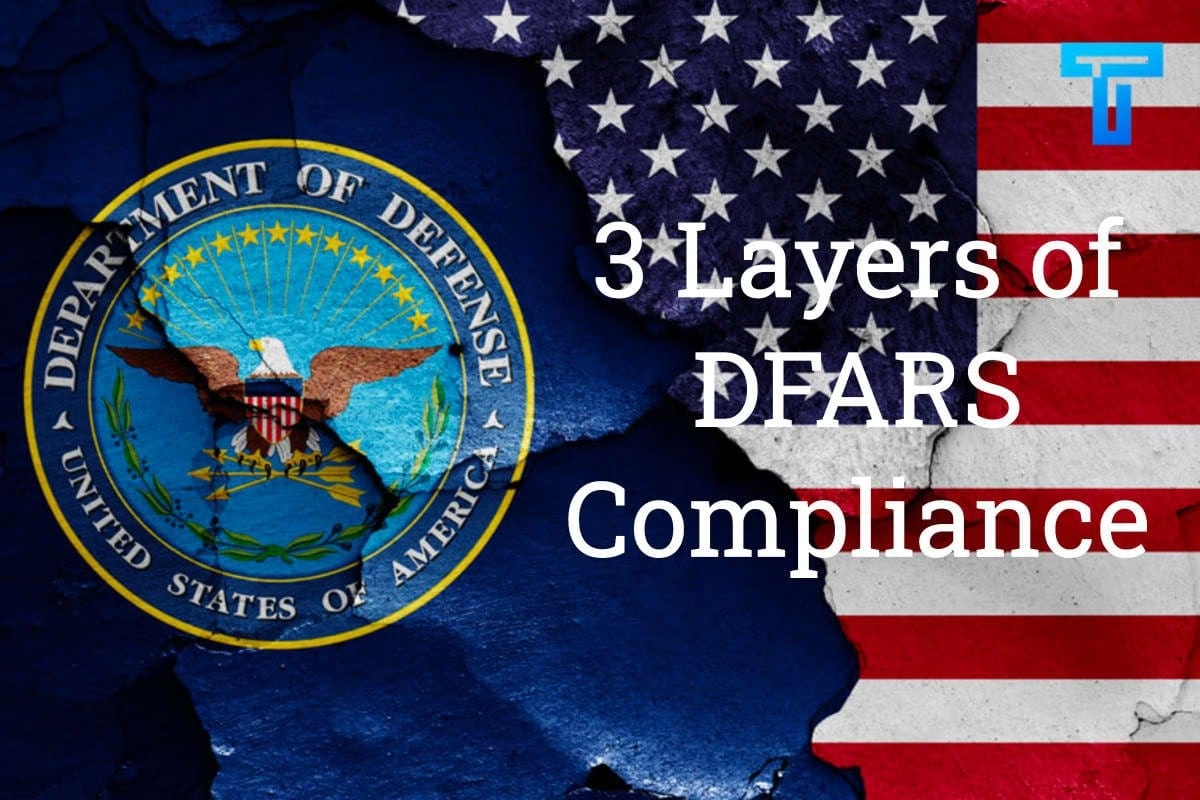
Whether you are new to the Defense Industrial Base or a veteran contractor with years under your belt, keeping your cybersecurity network secure is among the most critical of responsibilities. As a contractor with the Department of Defense, you are obligated to protect the interests of the government and military from criminals and adversarial nations. The DoD is very clear on its cybersecurity requirements for contractors like yourself. These regulations are outlined in the cybersecurity clause of the Defense Federal Acquisition Regulation Supplement. Commonly referred to as DFARS, this mandate is your guide to equipping your systems to adequately protect Controlled Unclassified information.
DFARS compliance is your duty as a participant in the DIB sector. If you’re unclear about what compliance entails, it is helpful to think of it in three successive portions: DFARS, NIST 800-171, and CMMC.
DFARS
As previously stated, DFARS stands for Defense Federal Acquisition Regulation Supplement. Simply put, DFARS is a document that lays out the rules and regulations for how contractors within the defense sector are to handle Controlled Unclassified Information or CUI. Whether your business is small or large, your cybersecurity network will need to adhere to these regulations in order to win contracts and remain in good standing with the DoD.
The cybersecurity clause of the DFARS requires you to remain in close communication with the Department of Defense in the event of a security breach. Once you’ve identified an attack, you are required to provide the DoD with regular updates for a 90-day period. More importantly, the DFARS utilizes a document called NIST-800 to specify how your systems should be set up.
NIST 800-171
National Institute of Standards and Technology Special Publication 800 is arguably the most critical piece of your company’s DFARS compliance. This document is comprised of 14 points that detail the correct procedures, policies, and specifications for your company’s cybersecurity apparatus. It is your guide to assessing threats, performing maintenance, and performing authentications. The provisions outlined in NIST 800-171 must be implemented and maintained for your contract to be in good standing. Failure to do so could put your contract in jeopardy, and risk your ability to win them in the future.
At this time, most contracts allow businesses to self-certify the integrity of their systems according to NIST 800-171. However, the third layer of your company’s compliance with DFARS is expected to introduce verification by an outside entity.
CMMC
Cybersecurity Maturity Model Certification is the third layer of DFARS compliance. Abbreviated as CMMC, this standard will fortify the DoD’s cybersecurity standards and is expected to be fully implemented by 2025. CMMC uses the NIST 800-171 framework to establish maturity levels. Each subsequent level comes with stricter requirements. However, the level that you need to meet will depend on the nature of your business. While CMMC is being phased in gradually, it is a good idea for you to prepare now.
Since the implementation of this measure relies heavily upon the framework of NIST 800-171, ensuring that your systems are in lockstep with those specifications is a great way to get prepared. If you are unsure about your current level of compliance or if you’d just like to consult with an expert, it is wise to develop a relationship with a reputable compliance management service.
Compliance Management Services
An experienced compliance manager can answer all of your questions regarding cybersecurity. They will have the tools and knowledge to adequately assess the readiness of your network and they will be able to advise you on the necessary actions to get your systems up to par. If you have any doubts about your company’s compliance with DFARS, a compliance manager is sure to put them to rest.